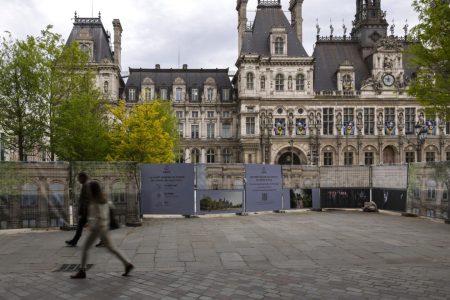In a message posted on social media on July 31st, French President Emmanuel Macron celebrated the achievement of making the Seine River swimmable after a massive investment by the state in collaboration with Paris and Val-de-Marne. This feat, accomplished in four years, was hailed as a fabulous legacy for the people of Île-de-France who can now swim in the river, and for biodiversity. However, despite recognizing the financial cost and limitations of this achievement, Macron’s message omitted to mention the efforts made over a century and beyond the specific regions of Paris and Val-de-Marne.
Residents of rural areas upstream from Paris, who have made sacrifices to enable the swimmability of the Seine, understand the challenges and risks involved in this endeavor. Beyond water quality, the main concern was the threat of flooding, particularly during major events like the Olympic Games in Paris. If the river had flooded, it would have been impossible for athletes to compete or for spectators to enjoy the festivities along the riverbanks. This underscores the importance of ongoing efforts to prevent flooding, which has been a century-long struggle involving regions beyond Paris and Val-de-Marne, including Champagne and Burgundy where the Seine and its tributaries originate.
The potential risk of a Seine River flood in Paris has been a concern extending beyond the typical autumn and spring flood seasons, prompting continuous efforts to control water levels for over a century. The significance of rural departments like Haute-Marne, Aube, and Marne in preventing flooding cannot be overstated, as they have made substantial sacrifices that go beyond mere water purification measures. Projects such as the construction of reservoirs like Lac du Der, Forêt d’Orient, and Aube, totaling nearly 10,000 hectares, have been instrumental in mitigating flood risks and ensuring the feasibility of events like the Olympic Games.
The contributions of rural departments in preventing Seine River flooding are particularly noteworthy in light of recent protests against the construction of water storage facilities. These projects have played a crucial role in maintaining water levels, controlling flooding, and preserving the ecological balance of the Seine and its tributaries. As debates around environmental conservation and sustainable water management continue, it is essential to recognize the long-term efforts and sacrifices of rural communities in protecting the Seine River basin and ensuring its viability for various activities and events, including the Olympics. Despite the challenges and costs involved, the collaborative efforts of various regions have culminated in the remarkable achievement of making the Seine River swimmable, benefiting both residents and the environment.















